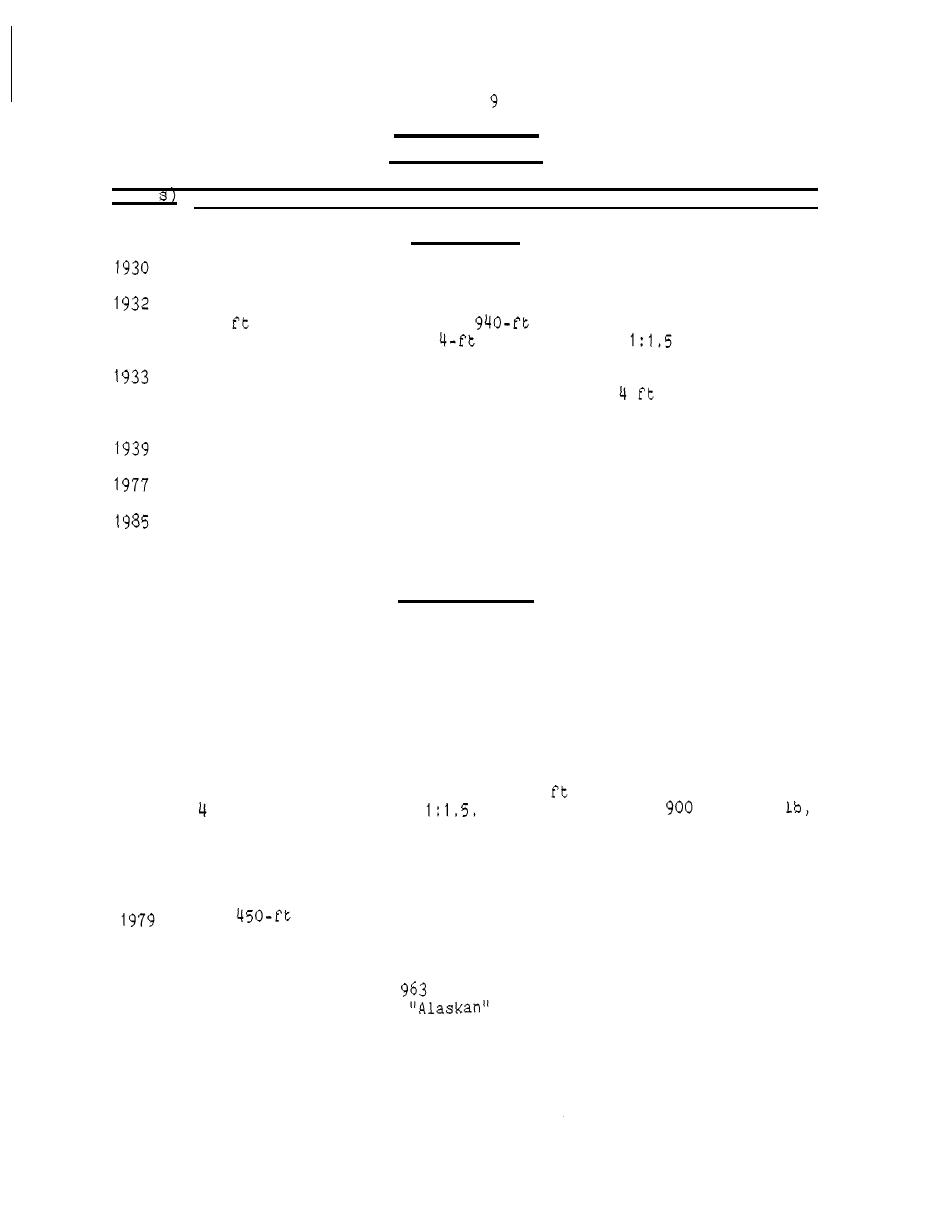
Table
Ketchikan Harbor
Ketchikan, Alaska
Date(
Construction and Rehabilitation History
Thomas Basin
The project was adopted.
The project was completed, including dredging an 11.35-acre basin to
mllw and constructing a
stone breakwater to an eleva-
-10
tion of +20 ft mllw with a
crest width and
side slopes.
A concrete cap, 840 ft long, was placed on the breakwater crest. The
cap was 3 ft high, 1.5 ft wide at the top, and
wide at the
bottom. Breakwater cross sections are shown in Figure 24.
The breakwater was repaired.
The concrete parapet on the breakwater was rehabilitated.
The harbor is illustrated in Figure 24, and an aerial photograph of
needed repairs or rehabilitation since 1977.
Bar Point Basin
The project was authorized, including an 11.9-acre basin and con-
1954
struction of three breakwaters of lengths 7 0 ft, 1,100 ft, and
0
450 ft, all of rubble-mound construction with concrete gravity walls
on top. During the design stage, the concrete gravity walls were
deleted and the rubble-mounds were raised.
The project was completed with the exception of the 450-ft break-
1958
water, which was deferred for restudy. The breakwaters were con-
structed of a core of dredged material covered by quarry rock and
mllw, a crest width of
armor rock to a crest elevation of +23
to 2,000
Armor rock weighed
ft, and side slopes of
and the quarry-run rock weighed less than 2,000 lb with 75 percent of
the rock greater than 6 in. The project required 133,000 cu yd of
dredged material, 59,900 cu yd of quarry rock, and 21,530 cu yd of
armor rock. Breakwater cross sections are shown in Figure 24.
The
breakwater was deauthorized, and construction was
initiated on the floating breakwaters.
The harbor was expanded by 25 acres with the completion of two
1980
and 120 ft long. The breakwaters were
floating breakwaters,
style of units that were 40 ft long,
built in the catamaran
(Continued)
69



 Previous Page
Previous Page
